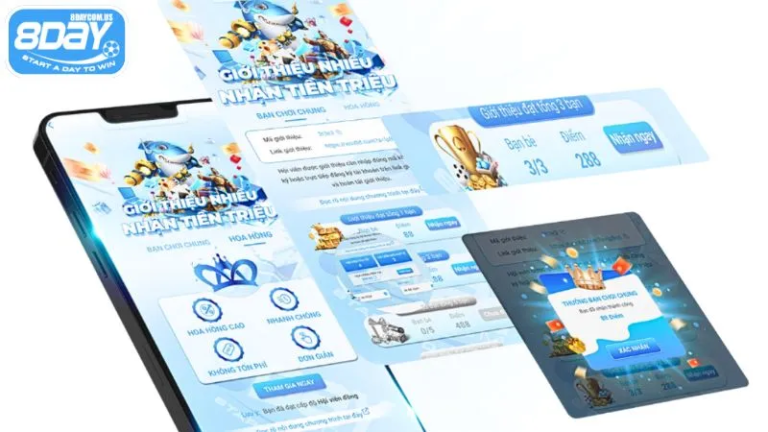The Role of Microtransactions in Mobile Gaming


Mobile gaming has become a significant part of the entertainment industry, and if you’re a regular gamer, you’ve probably encountered microtransactions at some point. Whether you’ve been tempted to buy a shiny new outfit for your character, purchase in-game currency, or speed up progress in a game, microtransactions are increasingly becoming a staple in mobile games. But what exactly are microtransactions, and how do they impact both gamers and developers? Let’s dive in and explore how this concept is shaping the future of mobile gaming.
What Are Microtransactions?
Before we dig deeper into the effects of microtransactions, it’s important to understand what they are. Microtransactions are small, in-app purchases that players can make while playing a mobile game. They can range from buying cosmetic items like skins and avatars to more significant purchases like power-ups, extra lives, or even game progress boosters.
Unlike the traditional model of paying upfront for a game, microtransactions allow developers to offer a free-to-play experience while monetizing through additional purchases within the game. For many developers, this business model has proven highly effective in generating revenue, particularly as mobile gaming continues to grow in popularity.
The Growth of Free-to-Play Mobile Games
The success of mobile games like Candy Crush, Clash of Clans, and Fortnite has been heavily supported by microtransactions. With free-to-play games, developers lure players in without any initial cost, allowing them to experience the game without commitment. The hook comes when players are faced with the option of purchasing something to enhance their experience.
In a free-to-play model, the game is designed to encourage in-game purchases. Whether it’s unlocking new levels, accessing exclusive content, or speeding up the game’s progress, microtransactions allow developers to monetize their game without charging a flat price upfront. This model appeals to a wide audience, making it easier for casual players to jump into the game without worrying about initial costs.
However, this business model isn’t without controversy. While some gamers are happy to buy into the game to speed up their progress or access new features, others argue that it leads to unfair advantages, especially in competitive games. This brings us to a key point: the balance between offering a rewarding gaming experience and monetizing through microtransactions.
How Microtransactions Shape the Gameplay Experience
The most obvious impact of microtransactions on gameplay is that they can directly influence how players experience a game. Let’s break down some key areas where microtransactions play a role.
1. Convenience vs. Grind
A common complaint among mobile gamers is the time and effort it takes to progress in free-to-play games. Many of these games rely on a “grind” system, where players must repeat certain tasks to earn rewards or advance. While this mechanic is part of the game’s design, it often becomes tedious over time.
Microtransactions provide players with an option to bypass this grind by purchasing items or boosts that speed up their progress. Some players love this convenience, as it allows them to avoid time-consuming tasks and reach higher levels faster. However, this also leads to criticism from those who feel that the game is pushing them toward spending money to avoid frustration.
2. Cosmetic vs. Pay-to-Win
Not all microtransactions are created equal. Many mobile games feature cosmetic microtransactions, such as skins, costumes, or avatar customization options. These purchases have no impact on gameplay and are strictly for visual flair. While these cosmetic items are typically seen as harmless, some games have shifted toward “pay-to-win” microtransactions.
Pay-to-win microtransactions are purchases that give players a significant advantage over others. For example, players can buy powerful weapons, stronger characters, or extra lives, which allow them to dominate in competitive scenarios. This model raises ethical questions, as it creates an uneven playing field, where players who spend money can progress faster and achieve better results than those who choose not to spend.
In competitive games like slot gacor game or poker game, this can create an unfair advantage, leading to frustration among non-paying players. Gamers may feel that their skill isn’t being rewarded and that victory is determined by how much money a player is willing to spend.
3. The Impact on Player Retention
One of the primary goals for game developers is to keep players engaged and coming back for more. Microtransactions can play a significant role in achieving this. By offering new content, daily rewards, and limited-time events, developers incentivize players to make purchases and continue playing.
Microtransactions can also create a sense of urgency and FOMO (Fear of Missing Out). Limited-time offers or exclusive items that can only be purchased for a certain time period push players to make purchases to avoid missing out on something special. This is particularly effective in games that offer seasonal updates, where players can unlock exclusive rewards based on their purchases.
The Dark Side of Microtransactions: Predatory Practices
While microtransactions can be beneficial for both developers and players, they’ve also been associated with some negative practices. One of the most controversial elements of microtransactions is the “loot box” system, where players can purchase virtual boxes containing random rewards. The problem with loot boxes is that they introduce a gambling element into the game, as players don’t know what they’re going to get. This can lead to addictive behavior, especially among younger players.
In addition to loot boxes, some developers are criticized for implementing microtransactions in ways that push players toward spending more money than they initially intended. For instance, some mobile games limit the number of times a player can play a level or restrict the number of lives they have. When players run out, they can either wait a certain amount of time or pay to keep playing. This mechanic, known as “energy gating,” can frustrate players into spending money to continue enjoying the game.
1. The Ethical Dilemma
The ethical concerns surrounding microtransactions are often debated. On the one hand, developers need to make money to continue supporting and updating their games. On the other hand, some practices—like pay-to-win mechanics, loot boxes, and energy gating—raise concerns about fairness, exploitation, and gambling addiction.
Many players argue that microtransactions should be more transparent, allowing players to know exactly what they’re purchasing and how it will impact their gameplay. When implemented responsibly, microtransactions can enhance the gaming experience. However, when done poorly, they can damage the reputation of a game and leave players feeling exploited.
The Future of Microtransactions in Mobile Gaming
As the mobile gaming industry continues to grow, it’s clear that microtransactions are here to stay. However, the way they are implemented may evolve over time. Developers will need to find a balance between monetization and maintaining a positive gaming experience for all players.
We may see more games moving toward subscription-based models, where players pay a recurring fee for access to content and features. This could offer a more transparent and fair way to monetize mobile games, without relying on microtransactions that can disrupt gameplay.
In the future, we might also see more regulation surrounding microtransactions, particularly when it comes to loot boxes and gambling-related mechanics. Some countries have already begun to introduce laws aimed at curbing the influence of microtransactions in games, particularly those that target younger audiences.
Conclusion: Striking the Right Balance
Microtransactions have undeniably changed the landscape of mobile gaming. They offer developers a way to generate revenue while providing players with a free-to-play experience. However, they’ve also introduced challenges, including ethical concerns and the risk of damaging the gaming experience for some players.
Ultimately, the success of microtransactions depends on how they are implemented. When done right, microtransactions can enhance gameplay, offering players additional content and convenience without ruining the experience. But when done poorly, they can lead to frustration, unfair advantages, and a loss of trust in developers.
As mobile gaming continues to evolve, it will be interesting to see how microtransactions develop and how the industry addresses the challenges they present. Whether you’re into slot777 gacor game enthusiasts, Poker game players, or casual mobile gamers, one thing is certain: microtransactions will remain a key component of the gaming experience, for better or for worse.






